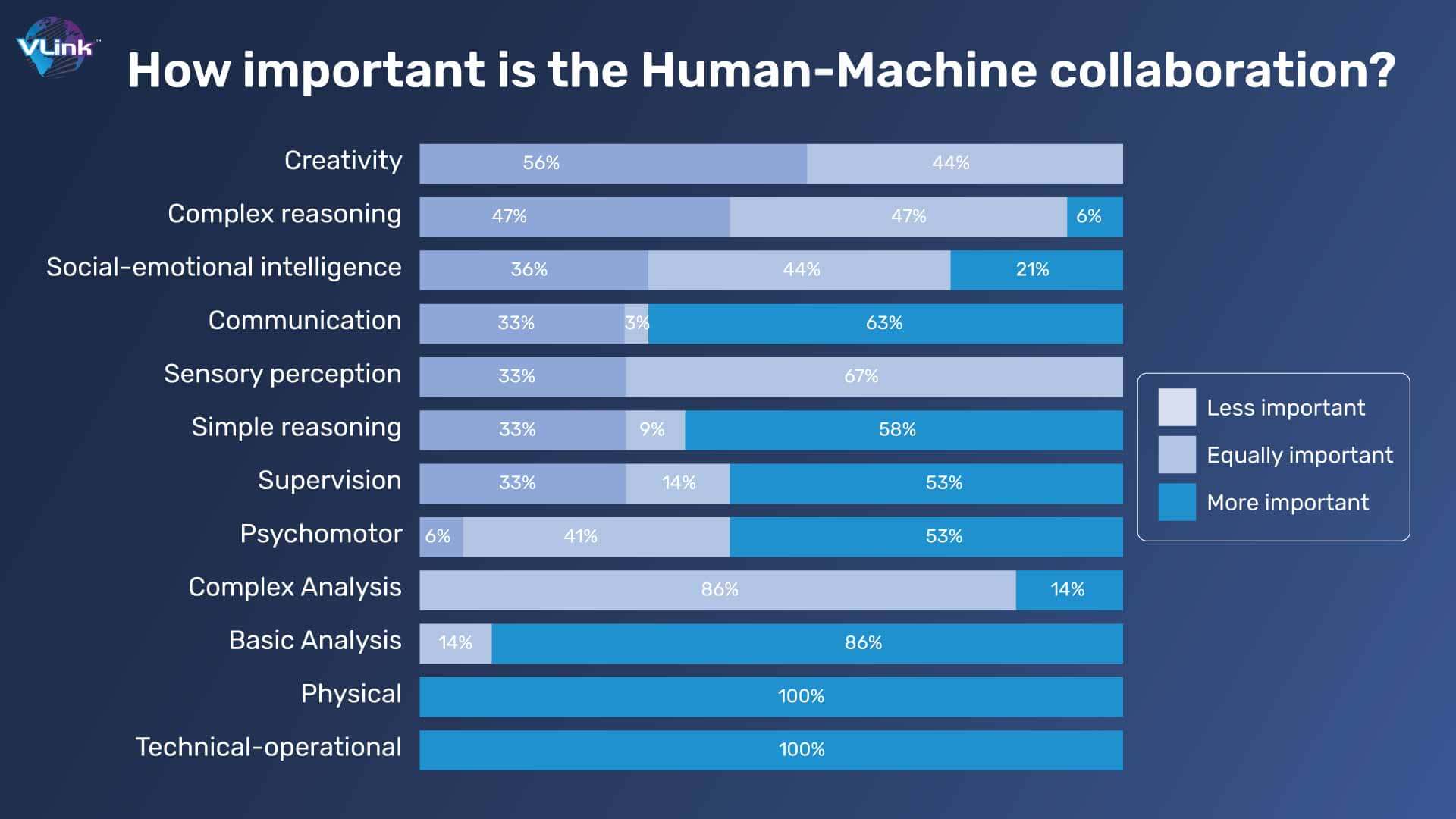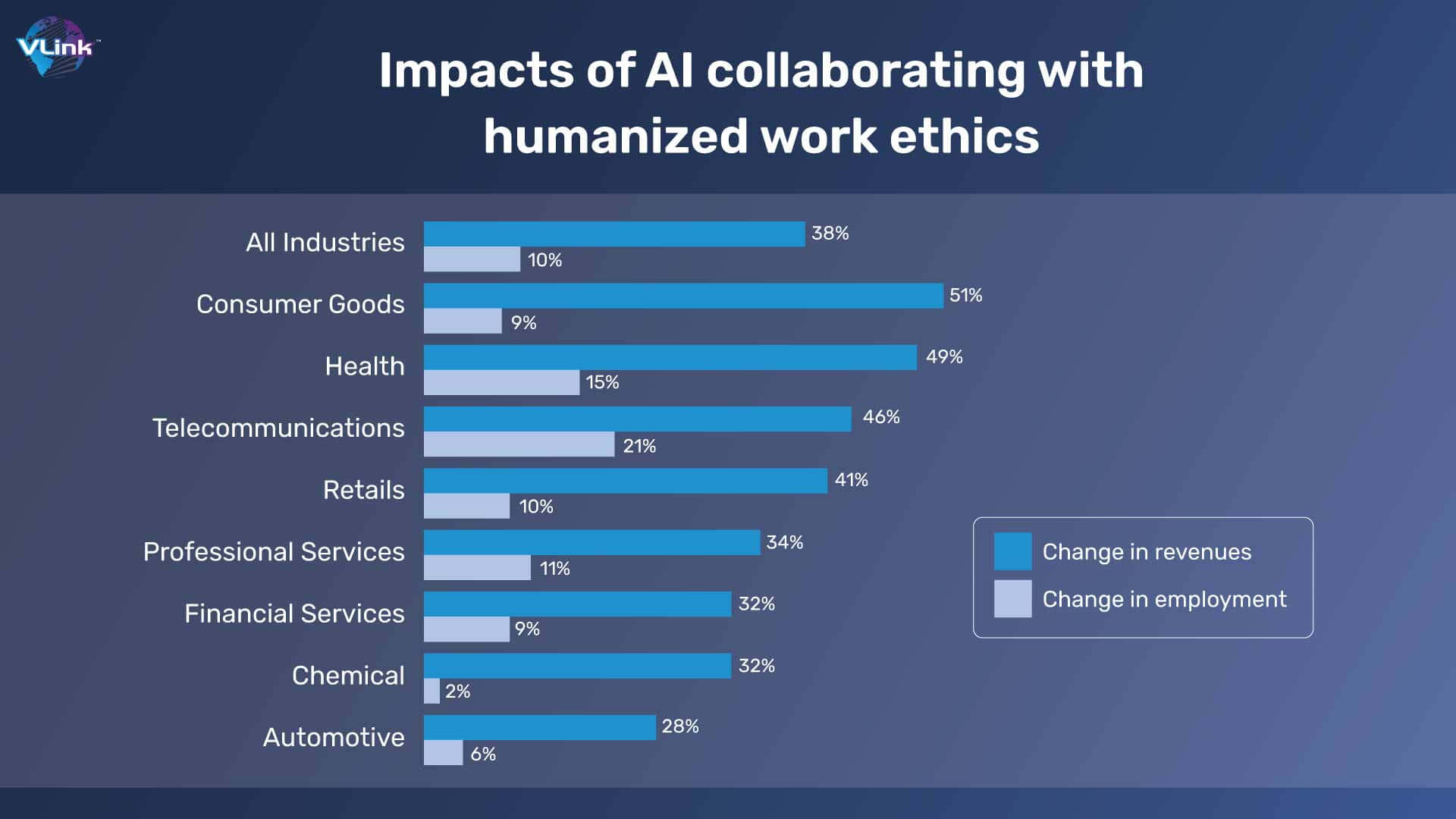In the fast-paced world of technology and automation, the synergy between humans and machines is revolutionizing the way we work. Human-machine collaboration is not just a buzzword; it's a transformative force shaping the future of work.
Industries have already started implementing trending technologies like artificial intelligence, robotic process automation, internet of things, etc. are easing the daily tasks performed by humans. Moreover, the idea to build customized solutions according to the users’ need focused on streamlining the traditional techniques of doing work.
In this comprehensive guide, we will talk about how human-machine collaborating is paving way for new opportunities of enhanced productivity and efficiency for individuals as well as businesses.
Current scenarios between human intelligence and machines
Today's organizations possess the ability to readily procure and engage exceptionally skilled talent from any corner of the globe. The pace of digital transformation is so swift that managers in the era of the Fourth Industrial Revolution find themselves consistently compelled to foster new value through adaptation and capability enhancement.
This can only be accomplished by harnessing cerebral and emotional aptitudes, formerly unnecessary in earlier industrial revolutions, and applying these proficiencies to aid workers in adapting to the essential symbiosis between humans and machines.
 With the gradual business automation and subsequent elimination of routine tasks from the workplace, enduring competencies will ascend to the zenith of every manager's aspiration. In addition to technological expertise, businesses will need their workforce to exhibit increasingly profound creativity and emotional acumen.
With the gradual business automation and subsequent elimination of routine tasks from the workplace, enduring competencies will ascend to the zenith of every manager's aspiration. In addition to technological expertise, businesses will need their workforce to exhibit increasingly profound creativity and emotional acumen.
Employees will be expected to redirect their focus towards skills such as critical thinking, ingenuity, intricate problem-solving, and receptiveness, while machines will adeptly tackle repetitive and analytical challenges at velocities beyond human capacity.
Factors that drive human-machine collaboration
Human-machine collaboration is reshaping the future of work in profound ways. This synergy between humans and machines leverages the strengths of both, resulting in enhanced productivity, creativity, and efficiency. Here are several ways in which this collaboration is driving the future of work:
- Augmented Intelligence
Machines, equipped with advanced algorithms and vast data processing capabilities, can analyze and generate insights from large datasets. Humans bring contextual understanding, intuition, and creativity to interpret and apply these insights effectively.

- Automation and Task Offloading
Routine, repetitive tasks are increasingly being automated. This allows humans to focus on higher-level, creative, and strategic aspects of their work. For instance, in manufacturing, robots handle repetitive assembly tasks, while human workers manage complex problem-solving.
- Improved Decision-Making
Machines demonstrate exceptional proficiency in swiftly handling extensive volumes of data. Their capacity to offer data-based suggestions empowers humans to render more enlightened choices, proving especially beneficial in sectors such as finance, healthcare, and logistics.
- Enhanced Customer Experience
AI-powered chatbots and virtual assistants are becoming proficient in handling customer inquiries. This frees up human agents to handle more complex issues and provide personalized solutions, ultimately improving overall customer satisfaction.
- Personalized Learning and Development
AI-driven adaptive learning platforms can tailor educational content to individual needs, making learning more efficient and effective. This ensures that employees acquire the skills and knowledge they need to thrive in their roles.
- Innovation and Creativity
Machines can assist in ideation and innovation processes by generating and evaluating ideas based on vast datasets. Humans provide the critical thinking, emotional intelligence, and nuanced understanding necessary for refining and implementing these ideas.
- Predictive Analytics and Forecasting
Through machine learning and data analytics engineering, businesses can make accurate predictions about market trends, customer behavior, and resource needs. This enables them to proactively adjust strategies and operations.
- Safety and Risk Management
Machines equipped with sensors and AI can monitor and mitigate risks in hazardous environments, potentially saving lives. Humans, on the other hand, provide the ethical and moral judgment needed in complex decision-making scenarios.
- Flexible Work Arrangements
Technological advancements pave the way for remote work and adaptable work hours, granting individuals the flexibility to operate in settings and at times that align with their preferences. This can result in elevated job contentment and a harmonious equilibrium between work and personal life.

- Continuous Improvement and Adaptability
Feedback loops between humans and machines can lead to iterative improvements in processes, products, and services. This constant refinement is crucial in today's rapidly evolving business landscape.
In conclusion, the future of work hinges on the seamless integration of human skills and machine capabilities. Embracing this collaboration allows us to unlock new levels of productivity, innovation, and efficiency, ultimately leading to a more dynamic and adaptable workforce.
Technologies that play a crucial role in human-machine collaboration
Human-machine collaboration relies on a range of technologies that enable seamless interaction and cooperation between humans and machines. Some of the crucial technologies that play a key role in this collaboration include:
- Artificial Intelligence (AI)
AI comprises a range of subdomains, including machine learning, natural language processing, and computer vision. These subfields empower machines to comprehend and react to human inputs, make decisions based on data, and continually improve their performance.
- Machine Learning
Machine learning algorithms enable machines to analyze data, recognize patterns, and make predictions. They are used in recommendation systems, predictive analytics, and autonomous decision-making.
- Natural Language Processing (NLP)
Natural language processing (NLP) is particularly crucial as it equips machines to comprehend and generate human language. This capability is essential for applications like chatbots, virtual assistants, and language translation services.
- Computer Vision
Computer vision technology enables machines to interpret and process visual information, such as images and videos. It is crucial in applications like facial recognition, object detection, and autonomous vehicles.
- IoT (Internet of Things)
Internet of Things (IoT) connects physical devices and sensors to the internet, allowing machines to collect and share data in real-time. This technology is pivotal in areas like smart homes, industrial automation, and healthcare monitoring.
- Robotics
Robotics involves the development of physical machines that can interact with the environment. These robots can perform tasks ranging from manufacturing and logistics to healthcare and service industries.

- Cloud Computing
Cloud technology provides the infrastructure and resources necessary to process and store vast amounts of data. It allows for scalable and cost-effective solutions, making AI and machine learning more accessible.
- Big Data and Analytics
Big data technologies enable the collection, storage, and analysis of massive datasets. This is crucial for making data-driven decisions and training machine learning models.
- Collaborative Tools and Platforms
Collaboration tools like project management software, communication platforms, and virtual reality environments facilitate human-machine collaboration in both physical and remote work settings.
- Blockchain
Blockchain technology can be used to create transparent and tamper-proof systems for data verification and trust-building, which is essential for applications like supply chain management and financial transactions.
- 5G and Edge Computing
High-speed, low latency 5G networks, combined with edge computing, enable real-time data processing and communication between devices, supporting applications like autonomous vehicles and remote surgery.

- Augmented and Virtual Reality (AR/VR)
AR and VR technologies create immersive environments that enhance human-machine collaboration. They are used in training, design, and remote collaboration across various industries.
- Biometric Authentication
Biometric technologies, such as fingerprint and facial recognition, provide secure and seamless authentication, ensuring that machines respond to authorized human users.
- Human-Computer Interfaces
Interfaces like touchscreens, voice recognition, and gesture-based controls enable intuitive interaction between humans and machines, making technology more accessible.
- Cybersecurity
As human-machine collaboration grows, robust cybersecurity technologies are essential to protect data, privacy, and critical systems from cyber threats.
These technologies are continually advancing, creating new opportunities for human-machine collaboration and shaping the future of work, healthcare, transportation, and many other sectors.

VLink’s assistance in driving the future of work
Certainly, it's clear that in today's evolving work landscape, organizations must adapt to new norms that encompass work flexibility, remote work, employee well-being, technological adaptation, and fresh social contracts with their workforce, regardless of their physical location.
VLink, as a digital strategy and design consultancy catering to global enterprises, is well-positioned to navigate these challenges and help businesses thrive in the new digital era. Your focus on creating transformative experiences and supporting successful work within the digital organization sets you apart.
Clients are drawn to VLink not only for your reputation for intellectual rigor but also for your strong foundation in visionary experience strategy and your dedication to facilitating digital transformation within enterprises.
As the business world continues to evolve and change, your expertise and commitment to innovation and adaptation will prove invaluable for enterprises seeking to stay competitive and responsive to the shifting landscape.
Frequently Asked Questions
Numerous scholars have asserted that machines can only supplant humans in repetitive, low-skilled, intricate yet uncreative, and perilous tasks within the sphere of manufacturing processes. Humans are indispensable in highly skilled innovative roles and crucial decision-making positions, as well as in domains that necessitate emotional intelligence.
The synergy between humans and machines serves to enhance their operational capabilities, amplifying their strengths and compensating for each other's imperfections. Such collaboration has the added benefit of reducing human errors while also providing invaluable support to the workforce.
There exist various avenues through which human intellect can join forces with machines, such as the application of artificial intelligence and automation. Automation further optimizes tasks, liberating humans from monotonous chores and allowing them to concentrate on endeavors demanding intricate reasoning and adaptability.






